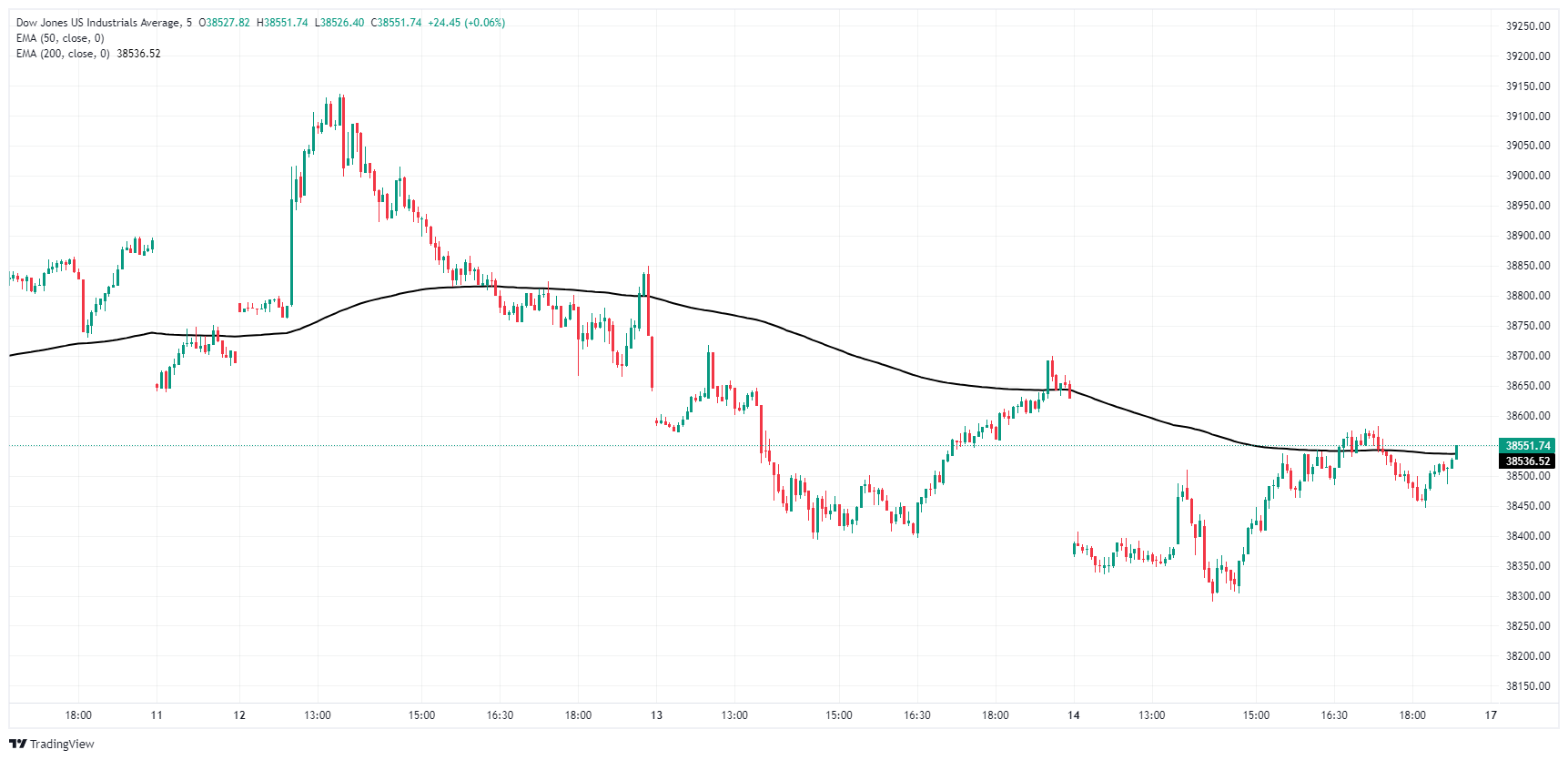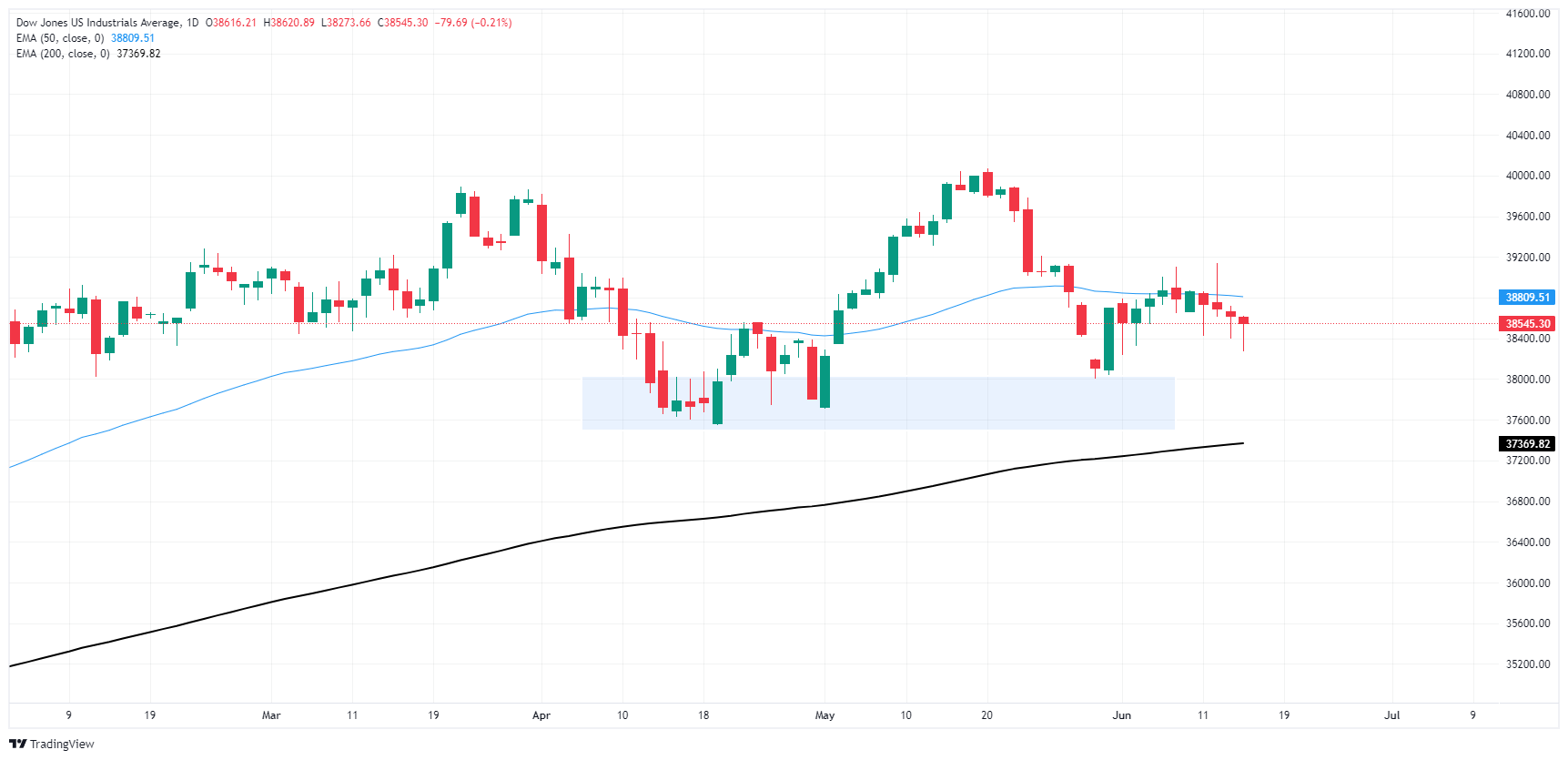- The Dow Jones rises intraday, but continues to decline at Thursday’s close.
- The University of Michigan Consumer Sentiment Index misses forecasts and continues to decline.
- Consumer inflation expectations rose in June.
The Dow Jones Industrial Average (DJIA) rose from an early low on Friday, but was still trading on the low side of Thursday’s closing bids after retreating further during the overnight session. It’s been a slow recovery on Friday as markets try to regain lost ground, but market sentiment remains mixed after the University of Michigan (UoM) Consumer Sentiment Index fell to a six-month low and failed. met an expected recovery, while the UoM Consumer Inflation Expectations returned to a recent high, as consumers remain discouraged about future price growth.
The UoM Consumer Sentiment Index survey fell to 65.6 in June, completely missing the forecast rise to 72.0 and falling from the previous 69.1, plummeting to a six-month low as consumers become increasingly fearful on the state of the American economy. 5-year consumer inflation expectations also rose back to a familiar high of 3.1% from the previous 3.0% as price growth continues to weigh on consumers’ economic prospects.
The wind was out of the market’s sails this week after the Federal Reserve’s (Fed) latest Summary Economic Projections (SEP) revealed that market hopes for multiple rate cuts remain in place and are high compared to what was expected. the Fed hopes in the future. The Fed’s “dot plot” of median interest rate expectations shifted lower to just one rate cut in 2024, still lower than the three projected in March.
Despite the Fed’s cautious tone, rate markets are still pricing in hopes of a rate cut in September. According to the CME’s FedWatch tool, rates traders are pricing in a nearly 70% chance of at least a quarter-point cut by the Fed in the September 18 rate decision.
Dow Jones News
Two-thirds of the Dow’s constituent stocks are in the red on Friday as sentiment tilts lower. Salesforce Inc. (CRM) is recovering from near-term selling pressure, rising 1.3% to $232.00 per share to lead the day’s few Dow Jones gainers. On the downside, Boeing Co. (BA) has fallen -2.06% on Friday, falling below $55.00 per share.
Dow Jones Technical Outlook
Friday’s US session marked a new weekly low for the Dow Jones, falling to 38,300.00 near the day’s market open before making a modest recovery to sit just above 38,500.00. Bullish momentum still has the DJIA trading below Thursday’s closing bids near 38,650.00, but an exhaustion could easily drag the main stock index back towards the 38,000.00 area.
The Dow Jones Industrial Average is on track to close slightly lower for the fourth consecutive day on Friday, and the index has continued to decline from recent all-time highs above 40,000.00 set in May. The index continues to hold above the 200-day EMA at 37,369.62, and a demand zone remains in place to capture any downward push below the 38,000.00 area.
Dow Jones Five Minute Chart
Dow Jones Daily Chart
The Dow Jones
The Dow Jones Industrial Average, one of the world’s oldest stock indices, is made up of the 30 most traded securities in the United States. The index is weighted by price rather than capitalization. It is calculated by adding the prices of the securities that comprise it and dividing them by a factor, currently 0.152. The index was founded by Charles Dow, also founder of the Wall Street Journal. In recent years it has been criticized for not being sufficiently representative, since it only follows 30 companies, unlike broader indices such as the S& P 500.
There are many factors that drive the Dow Jones Industrial Average (DJIA). The main one is the aggregate performance of its component companies, revealed in quarterly corporate earnings reports. US and global macroeconomic data also contribute, influencing investor sentiment. The level of interest rates, set by the Federal Reserve (Fed), also influences the DJIA, as it affects the cost of credit, on which many companies largely depend. Therefore, inflation can be a determining factor, as well as other parameters that influence the decisions of the Federal Reserve.
The Dow Theory is a method for identifying the main trend of the stock market developed by Charles Dow. A key step is to compare the direction of the Dow Jones Industrial Average (DJIA) and the Dow Jones Transportation Average (DJTA) and only follow trends where both are moving in the same direction. Volume is a confirmation criterion. The theory uses elements of maximum and minimum analysis. The Dow theory proposes three phases of the trend: accumulation, when the smart money begins to buy or sell; public participation, when the general public joins the trend; and distribution, when the smart money abandons the trend.
There are several ways to trade the DJIA. One of them is to use ETFs that allow investors to trade the DJIA as a single security, instead of having to buy shares of the 30 companies that comprise it. A prominent example is the SPDR Dow Jones Industrial Average ETF (DIA). Futures contracts on the DJIA allow traders to speculate on the future value of the index, and options provide the right, but not the obligation, to buy or sell the index at a predetermined price in the future. Mutual funds allow investors to purchase a portion of a diversified portfolio of DJIA securities, providing exposure to the global index.
Source: Fx Street
I am Joshua Winder, a senior-level journalist and editor at World Stock Market. I specialize in covering news related to the stock market and economic trends. With more than 8 years of experience in this field, I have become an expert in financial reporting.







